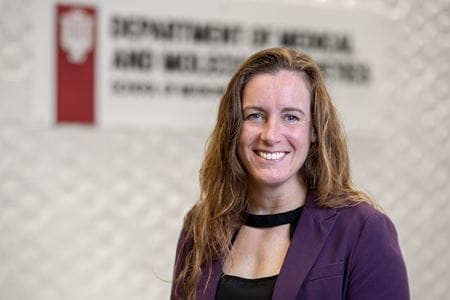Erin Conboy, MD, is a rare disease detective. In her role as co-director of the Undiagnosed Rare Disease Clinic (URDC) at the Indiana University School of Medicine, she takes on unsolved medical mysteries, grapples with false leads and doggedly persists until she and her team find the “smoking gun” lurking in a patient’s genes that enables a diagnosis.
Outside the office, Conboy grapples in a different way. She’s a two-time world champion in Brazilian jiu-jitsu, or BJJ, a martial art that focuses on self-defense using ground fighting and strangle holds.
“It’s a sport that’s not for the weak at heart,” said Conboy’s coach, Eric Board of Naptown Brazilian Jiu-Jitsu and Boxing, located just minutes from Conboy’s office in downtown Indianapolis. “It’s the most comprehensive martial art there is. You’re not going to be good at it in a month, or a year, or even two years. It’s a long journey.”
Conboy is about halfway to black belt, a feat that can take 10 to 15 years. Good thing she’s built for endurance.
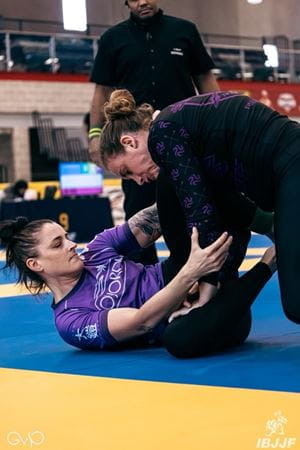 The human genome has about 20,000 genes. Scientists only know what about 7,000 of them do.
The human genome has about 20,000 genes. Scientists only know what about 7,000 of them do.
“We have about 13,000 genes to figure out,” Conboy said. “We’re just going to have to keep chipping away at it, and it will take a long time.”
At the URDC, Conboy and her team follow genetic clues until they find the answers to solve medical “cold cases.” They recently diagnosed a teen patient’s ultra-rare genetic disorder after 16 years of mystery symptoms.
Sometimes the team must discover a new gene before cracking the case — a process that takes years of research, examining emergent medical literature and networking with other geneticists around the world.
“Once a patient enrolls in our program, we never give up,” said Francesco Vetrini, PhD, MSc, a clinical molecular geneticist who co-directs the URDC with Conboy and has described their roles as “yin and yang.” He begins each case by examining data and images from genetic testing while Conboy observes and interviews the patient in the clinic at Riley Hospital for Children.
“She looks from the outside in, and I look from the inside out,” Vetrini said. “In the end, we get the right diagnosis.”
‘The ultimate teammate’
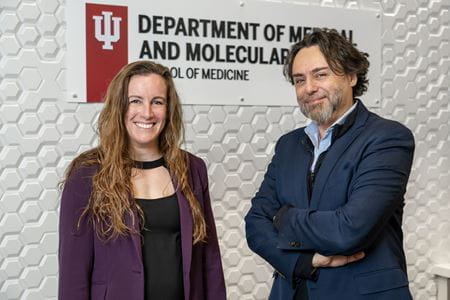 Conboy was recruited to IU from the Mayo Clinic in 2018 to launch the Undiagnosed Rare Disease Program. In 2023, the URDC joined a short list of institutions comprising the NIH-funded Undiagnosed Diseases Network.
Conboy was recruited to IU from the Mayo Clinic in 2018 to launch the Undiagnosed Rare Disease Program. In 2023, the URDC joined a short list of institutions comprising the NIH-funded Undiagnosed Diseases Network.
“This grant funding would not have been possible without the infrastructure developed by Dr. Conboy and the expertise that she brings,” said Stephanie Ware, MD, PhD, chair of the Department of Medical and Molecular Genetics.
Alongside her work in rare diseases, Conboy has started an ocular genetics clinic with Kathryn Haider, MD, and an immunogenetics clinic with Jay Jin, MD, PhD. Conboy is also associate director of the Medical Genetics Residency program at the IU School of Medicine.
“She is a very talented diagnostician, and she is always willing to go above and beyond in understanding the underlying genetic cause of a patient’s symptoms,” said Ware, adding, “She is hardworking, has a sense of humor, is dedicated, passionate about what she does, patient-focused and resilient — I wish we had a dozen geneticists like her!”
Ware calls Conboy “a great colleague,” paralleling Board’s description of her as “the ultimate teammate” in BJJ. Conboy’s hardworking, resilient nature helps her excel both in the clinic and on the grappling mat.
In 2021 and 2022, Conboy won back-to-back world championships in the women’s blue belt division and didn’t lose a match for 28 months straight. Now she’s aiming for a purple belt title.
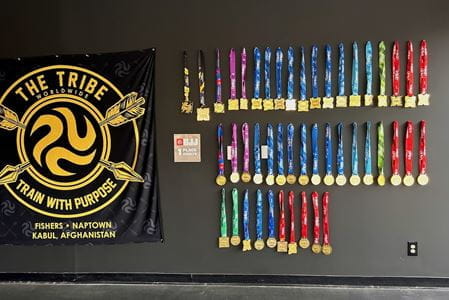
“For most of my life, I’ve not been a confident person,” Conboy said. “In jiu-jitsu, I was coming from behind — I started as an adult, I’m a woman and not the biggest person in the room — but I found out I can win against someone who is bigger and stronger. People underestimate you, but then you come at them with aggression, strength and skill.”
Conboy’s colleagues are used to her coming into work with black eyes and sprains from her sport.
“In jiu-jitsu, you have to get really comfortable with being uncomfortable — you might be pinned under a 250-pound man and have to find a way to get out,” she said. “That confidence transfers over to my work and has improved my mental toughness, as well as my patience with myself and my colleagues when things go wrong.”
Sometimes Conboy and her team at the URDC think they’ve found the gene defect that’s responsible for their patient’s symptoms, only to later discover they were wrong. That’s when persistence kicks in.
“We have to roll with the punches and move on to the next gene,” Conboy said.
‘Daring greatly’
It’s not surprising Conboy draws inspiration from the “Man in the Arena” passage in the "Citizenship in a Republic" speech given by Theodore Roosevelt:
“It is not the critic who counts; not the man who points out how the strong man stumbles, or where the doer of deeds could have done them better. The credit belongs to the man who is actually in the arena, whose face is marred by dust and sweat and blood; who strives valiantly; who errs, who comes short again and again … who at the best knows in the end the triumph of high achievement, and who at the worst, if he fails, at least fails while daring greatly.”
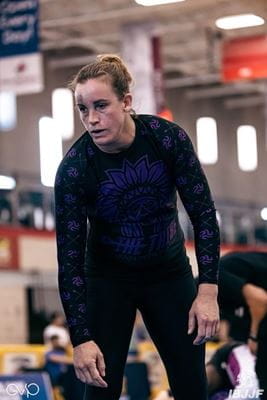 No one could accuse Conboy of shouting from the sidelines. She’s in the arena every day, striving for answers for her patients.
No one could accuse Conboy of shouting from the sidelines. She’s in the arena every day, striving for answers for her patients.
Rachel Hart, DO, admires her mentor’s passion and collaborative spirit.
“By coordinating efforts across various specialties, Dr. Conboy ensures that patients receive comprehensive, coordinated care,” said Hart, a fourth-year resident in the Pediatrics-Medical Genetics Residency program. “This collaborative approach not only improves patient outcomes but also strengthens the educational experience for trainees, who benefit from seeing how different specialties work together to tackle challenging cases.”
Hart began her residency shortly after the URDC was launched and has been involved in both patient care and research aspects of treating rare diseases. She noted Conboy’s commitment to health equity that’s evident in the clinic’s structure. Although funding for rare disease research is scarce, these patients receive free genetic sleuthing services.
Through Conboy’s example, Hart has observed how to provide compassionate care during what’s often a long wait for diagnosis.
“It’s a valuable lesson that has taught me to approach clinical challenges with patience and resilience, and to trust that, with time, collaboration and persistence, answers will come,” Hart said.
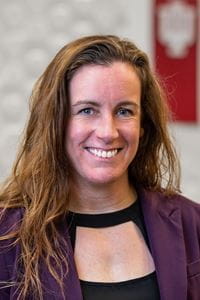 As a woman in medical genetics, Hart considers Conboy an exemplar in balancing patient care, research and teaching responsibilities while also allotting time for family and outside interests — like champion-level jiu-jitsu training.
As a woman in medical genetics, Hart considers Conboy an exemplar in balancing patient care, research and teaching responsibilities while also allotting time for family and outside interests — like champion-level jiu-jitsu training.
“Dr. Conboy has been essential in helping me navigate the complexities of medical genetics, especially in building confidence and overcoming feelings of imposter syndrome that often arise in such a challenging field,” Hart said.
Conboy embraces challenges as opportunities to learn. Whether its grappling in Brazilian jiu-jitsu or with rare disease cases, she never seems to tire.
“She has the ability to push forward regardless of the adversity she’s under,” said BJJ coach Board. “Her discipline and drive to be the best are like no other.”
